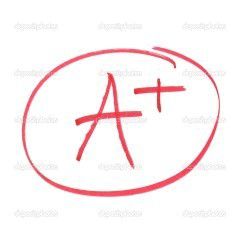You run a gizmo factory Complete Solution All correct Answer
1 You run a gizmo factory. Over the past year the average output of the factory is 480 gizmos and the standard deviation of that output is 10 units per day. In repeated random samples of size n = 40 days, the expected value of sample mean is:
a 12
b 480
c 76
d 48
2 In the previous question the variance of the sample mean is.
a 10
b 2.5
c 15.8
d 1.58
3 Using the population mean and standard deviation in question 1, what is the probability that the mean of a random sample of n = 40 days exceeds 482 gizmos:
a 0.1020
b 0.0571
c 0.0384
d 0.0287
4 Using the population mean and standard deviation in question 1, in repeated samples of size n = 40, 95% of sample means fall within that fall within ±_____ gizmos from the population means.
a 3.9
b 3.5
c 3.1
d 2.7
5 In the population of employees in your company, 35 percent contribute to the annual United Way campaign. You plan to take a sample of size n = 200 and calculate the sample proportion who contribute to United Way.
The expected value of the sample proportion is:
a 0.035
b 0.25
c 0.35
d 0.40
6 In the previous question, the standard error of the sample proportion is:
a 0.0473
b 0.0415
c 0.0398
d 0.0337
7 In the previous question, 90 percent of sample proportions from samples of size n = 100 deviate from the population proportion of 0.35 by no more that ±____ (or ____ percentage points).
a 0.036 (3.6 percentage points.)
b 0.042 (4.2 percentage points.)
c 0.048 (4.8 percentage points.)
d 0.055 (5.5 percentage points.)
8 There is a population of 10 families in a small neighborhood. You plan to take a random sample of 4 families (without replacement). How many samples of size n = 4 are possible.
a 40
b 80
c 210
d 400
9 The expression means:
a In repeated sampling the probability that population mean is within ±1.96σ/√n from x̅ is 0.95.
b In repeated sampling the probability that x̅ is within ±1.96σ/√n from the population mean is 0.95.
c 95% of sample means deviate from the population mean by no more than 1.96σ/√n in either direction.
d Both b and c are correct.
10 The population proportion of Americans with diabetes is 9 percent (π = 0.09). In repeated random samples of n = 800 Americans, 90% of sample proportions of people with diabetes would fall within ±______ from π.
a 0.01 (1.0 percentage point)
b 0.017 (1.7 percentage points)
c 0.029 (2.9 percentage points)
d 0.036 (3.6 percentage points)
11 As part of a statistics assignment in October to estimate the percentage of voters who would vote for a mayoral candidate, each of 500 students collects his or her own random sample of likely voters. There are 400 voters in each student’s random sample.
Each student then constructs a 95 percent confidence interval for the population proportion who will vote for the candidate using his or her own random sample. Considering the 500 intervals constructed by the students, the expected number of intervals that will contain the population proportion who will vote for that candidate will be approximately:
a 380
b 400
c 475
d 500
12 Suppose the sample proportion of one of the students in the previous question, Beth's sample, is p̅ = 0.46. Beth's 95% interval estimate of proportion of the population of voters voting for the candidate is:
a [0.41 , 0.51]
b [0.40 , 0.52]
c [0.39 , 0.53]
d [0.38 , 0.54]
13 It is estimated that 80% of Americans go out to eat at least once per week, with a margin of error of 0.04 (for 95% confidence). A 95% confidence interval for the population proportion of Americans who go out to eat once per week or more is:
a [0.722, 0.878]
b [0.760, 0.840]
c [0.771, 0.829]
d [0.798, 0.802]
14 You are the manager of a political campaign. You think that the population proportion of voters who will vote for your candidate is 0.50 (use this for a planning value). Your candidate wants to know what proportion of the population will vote for her. Your candidate wants to know this with a margin-of-error of ± 0.01 (at 95% confidence). How big of a sample of voters should you take?
a 1499
b 5037
c 8888
d 9604
15 If your candidate changes her mind and now wants a margin-of-error of ± 0.03 (but still 95% confidence), you will:
a have to select a smaller sample
b be able to use the same sample
c have to select a larger sample
d the margin-of-error does not have anything to do with the sample size
16 You run a bank and want to estimate the bank’s average number of customers per day (the population is all the days you are open for business in a year). You take a random sample of 10 days and record the numbers of customers on those days. The sample data is shown below. What is a 95% confidence interval for the bank’s average number of customers per day?
450 470 430 420 490
440 460 420 500 420
a [433, 467]
b [430, 470]
c [429, 471]
d [424, 476]
17 As the manager of the bank in the previous question, you want to your 95% interval estimate to capture the population mean customers per day within ±10 customers. Using a planning value of σ̂ = 35, how many days should you include in the sample?
a 40
b 48
c 59
d 68
18 You work for a charitable organization and you want to estimate the average age of the people who donate to your organization. You get a random sample of n = 119 donors and the value of the sample mean is 42 years. The value of the sample standard deviation is 19 years.
The lower and upper end of the 95% confidence interval for the average age of people who donate to your organization are:
a [36.4, 47.6]
b [37.5, 46.5]
c [38.6, 45.4]
d [39.8, 44.2]
19 In the previous question you want to test the hypothesis, at the 5 percent level of significance, that the average age is at least 45 years. Compute the probability value for the test.
a 0.0427 Reject the null hypothesis and conclude the mean age is less than 45.
b 0.0427 Do not reject the null hypothesis. Conclude the mean age is not less than 45.
c 0.0043 Reject the null hypothesis and conclude the mean age is less than 45.
d 0.0043 Do not reject the null hypothesis. Conclude the mean age is not less than 45.
20 Regardless how you answered the previous question, which of the following statements is correct?
a If the mean age is in fact greater than 45 and the hypothesis test leads you to conclude that it is less than 45, the you have committed a Type II error.
b If the mean age is in fact greater than 45 and the hypothesis test leads you to conclude that it is less than 45, the you have committed a Type I error.
c If the mean age is less than 45 and the hypothesis test leads you to conclude that it is greater than 45, the you have committed a Type I error.
d If the mean age is in at least than 45 and the hypothesis test leads you to conclude that it is greater than 45, the you have committed a Type II error.
21 You are reading a report that contains a hypothesis test you are interested in. The writer of the report writes that the p-value for the test you are interested in is 0.091, but does not tell you the value of the test statistic. From this information you can:
a You cannot decide based on this limited information. You need to know the value of the test statistic.
b Not reject the hypothesis at a Probability of Type I error = 0.10, and not reject at a Probability of Type I error = 0.05
c Reject the hypothesis at a Probability of Type I error = 0.10, and reject at a Probability of Type I error = 0.05
d Reject the hypothesis at a Probability of Type I error = 0.10, but not reject at a Probability of Type I error = 0.05
22 According to the Census Bureau the sample proportion of American children without health insurance rose from 0.109 in 2005 to 0.117 in 2006. Using the Census data you test the hypothesis that the change in the population proportion of American children without health insurance is zero with a Probability of Type I error = 0.05. You reject the zero change hypothesis.
The correct interpretation is:
a The odds are 5 percent that if the sample of American children in 2006 had been expanded to include the entire population of American children, the change in the proportion of children without health insurance would still not be zero.
b Even if the change in the population of American children without health insurance really is zero, 5% of all repeated samples would have produced test statistics that cause you to reject the hypothesis that the change is zero.
c The test statistic for the null hypothesis that H₀: π = 0.109 is less than the critical value.
d 95 percent of repeated samples would produce confidence intervals within ± 0.05 points of 0.117.
23 To test the hypothesis, at a 5% level of significance, that the proportion of American children without health insurance has increased from 0.109, a random sample of 1020 children revealed a sample proportion of 0.121. Compute the p-value.
a 0.1112 Conclude that proportion of children without health insurance has increased.
b 0.1112 Conclude that proportion of children without health insurance has not increased.
c 0.0556 Conclude that proportion of children without health insurance has increased.
d 0.0056 Conclude that proportion of children without health insurance has not increased.
24 The following data for a sample of 10 individuals shows the hourly earnings and years of schooling.
Hourly Years of
Earnings Schooling
$17.24 15
15.00 16
14.91 8
4.50 6
18.00 15
8.29 12
19.23 16
18.69 18
7.21 12
42.06 22
To determine the estimated regression equation relating hourly earnings to year of schooling, the following calculations are done for you.
∑y = 165.13 ∑x = 140
∑xy = 2670.3 ∑x² = 2158
The prediction error for a person with 18 years of schooling is:
a -$5.07
b -$6.22
c $2.28
d $1.05
Next SIX questions are based on the following regression model
Suppose you are assisting the county assessor (whose job is to assess the value of properties for property tax purposes) in determining a model where the price of a single-family residential property in a given neighborhood can be predicted based on the size of the property. You obtain a sample of n = 23 residential properties. You run a regression and obtain the following regression output from Microsoft Excel.
SUMMARY OUTPUT
Regression Statistics
Multiple R 0.93254
R Square
Adjusted R Square 0.86343
Standard Error
Observations 23
ANOVA
df SS MS F Significance F
Regression 140.0924 9.38E-11
Residual 21 2930.605
Total 22480.87
Coefficients Standard Error t Stat P-value Lower 95% Upper 95%
Intercept 4.2258 18.3377 0.23 0.819979 -33.9095 42.361
Size (Square Feet) 0.0851 0.006 9.38E-11
25 The model predicts that the price of a residential property with a size of 3,000 square feet would be ______ thousand.
a $250
b $260
c $270
d $280
26 The standard error of estimate for the regression is:
a 8.565
b 9.941
c 11.813
d 13.554
27 The regression sum of squares (SSR) is:
a 2930.605
b 19550.265
c 22480.87
d 25411.48
28 The regression model estimates that _____% of the variation in the price of the residential properties is explained by the size of the properties.
a 93%
b 90%
c 87%
d 84%
29 The value of the test statistic to test the null hypothesis that property size does not influence the price of the property is ______.
a 14.18
b 11.81
c 9.42
d 8.57
30 The margin of error to build a 95% confidence interval for the slope coefficient that relates the price response to each additional square foot is _______.
a 0.052
b 0.042
c 0.032
d 0.012
You run a gizmo factory ( Complete Solution Answer)
1 You run a gizmo factory. Over the past year the average output of the factory is 480 gizmos and the standard deviation of that output is 10 units per day. In repeated random samples of size n = 40 days, the expected value of sample mean is:
a 12
b 480
c 76
d 48
2 In the previous question the variance of the sample mean is.
a 10
b 2.5
c 15.8
d 1.58
3 Using the population mean and standard deviation in question 1, what is the probability that the mean of a random sample of n = 40 days exceeds 482 gizmos:
a 0.1020
b 0.0571
c 0.0384
d 0.0287
4 Using the population mean and standard deviation in question 1, in repeated samples of size n = 40, 95% of sample means fall within that fall within ±_____ gizmos from the population means.
a 3.9
b 3.5
c 3.1
d 2.7
5 In the population of employees in your company, 35 percent contribute to the annual United Way campaign. You plan to take a sample of size n = 200 and calculate the sample proportion who contribute to United Way. 




Online Users
-
 Helper
Today
Helper
Today





A+ - Thank you!
Thanks for the positive feedback!